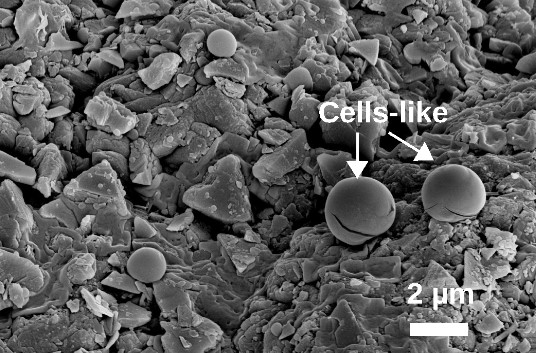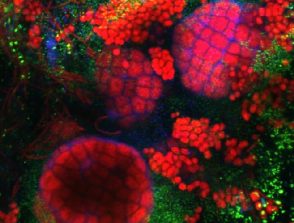Influence of the alteration of (ultra)mafic rocks on the diversity and adaptation of associated microbial communities

Start: 01 September 2016
End: 02 June 2020
Supervisors :
Bénédicte Menez, Emmanuelle Gérard
Related teams :
Lithosphere Organosphere Microbiosphere (LOMs)
Status: Defended
The subsurface is considered as the largest habitat on Earth hosting the majority of microbial biomass and species diversity. The oceanic crust constitutes the largest aquifer of our planet where water-rocks reactions provide sources of aiotic carbon and energy from which deep microbial communities may flourish in the absence of light. In the framework of this thesis, we focused on two major subsurface hydrothermal processes, namely the aqueous alteration of crystalline basalts and the serpentinisation of peridotites, with the aim to study the influence of rock alteration on the associated microbial communities’ ecology. To this aim, microbial communities diversity and their metabolic potential were characterized for (i) the recently discovered serpentinite-hosted hydrothermal field, namely the Old City hydrothermal field (OCHF), located on the eastern region of the ultraslow southwest Indian ridge (SWIR) and (ii) a basaltic aquifer influenced by anthropogenic gas injections at Hellisheiði, Iceland. Metagenomic approaches revealed that microbial diversity and metabolisms at OCHF depend on the relative influences of serpentinization-derived fluids and seawater. Moreover, our results suggested strong heterogeneities within and between hydrothermal vents, likely due to diffuse hydrothermal fluid venting. In these vents, the microbial niches are potentially partitioned at the microscale according to the relative contribution of serpentinization derived hydrothermal fluids and seawater, hence providing different pools of nutrients. A major outcome of this thesis is that putatively serpentinization influenced microbial phylotypes at OCHF are closely related to microorganisms from ophiolitic serpentinite-hosted ecosystems rather than to its unique oceanic analog, namely the Lost City hydrothermal field (LCHF). Considering that the OCHF is located in the most amagmatic region of the SWIR whereas gabbros are widespread below the LCHF, we postulated that magmatic intrusions impacting both the protolith mineralogy and hydrothermal fluid composition and temperature could be the main factor explaining differences in microbial ecology between OCHF and LCHF. Genomic comparisons of microbial populations inhabiting distinct serpentinized systems highlighted several adaptation and evolution strategies to face extreme conditions related to serpentinization. Furthermore, genome-resolved metagenomics underline the metabolic functions of taxonomic groups in Hellisheiði’s basaltic aquifer, where rock alteration following gas injections substantially sustain microbial communities. This thesis supports previous evidences that deep microbial ecosystems ecology is highly related to subsurface abiotic processes that depend on hydro-geological regimes and extended our knowledge on metabolic and adaptation strategies allowing such ecosystems to thrive under extreme conditions.
Keywords : deep biosphere, oceanic crust, serpentinization, basalt alteration, abiotic carbon compounds, metagenomics





